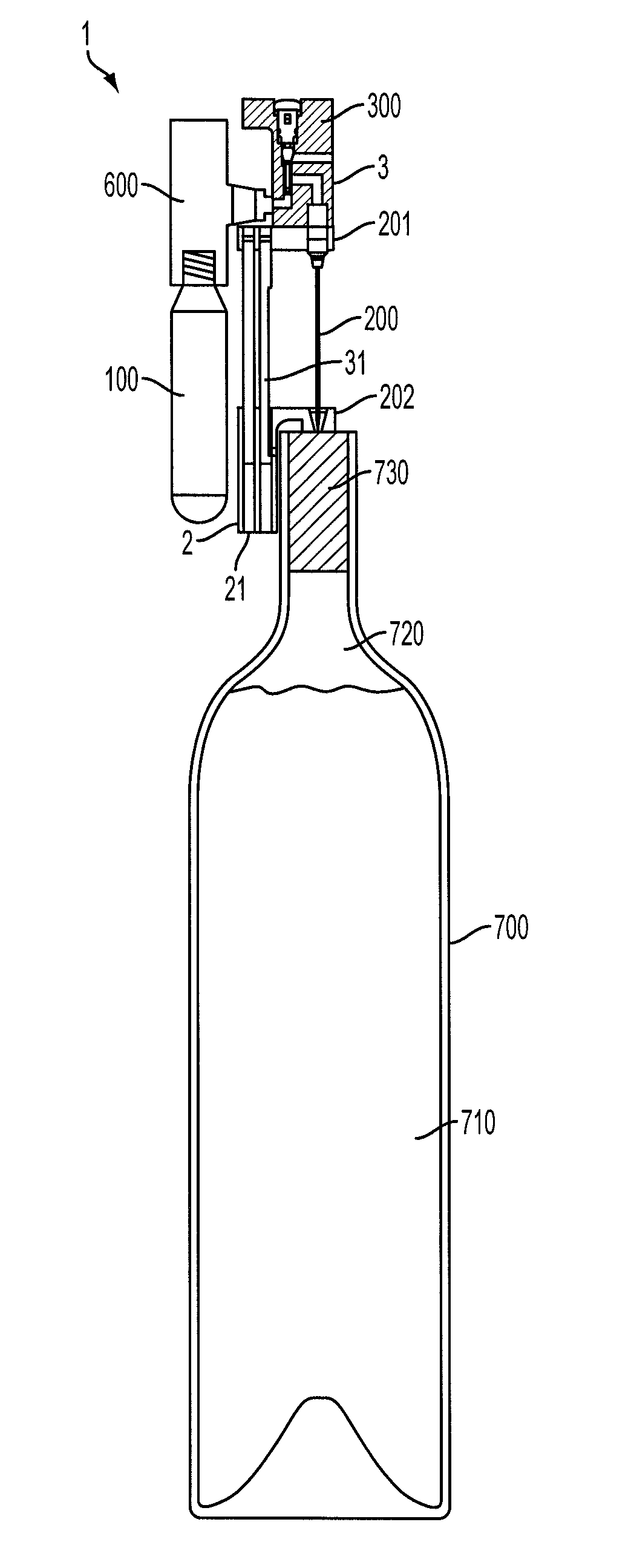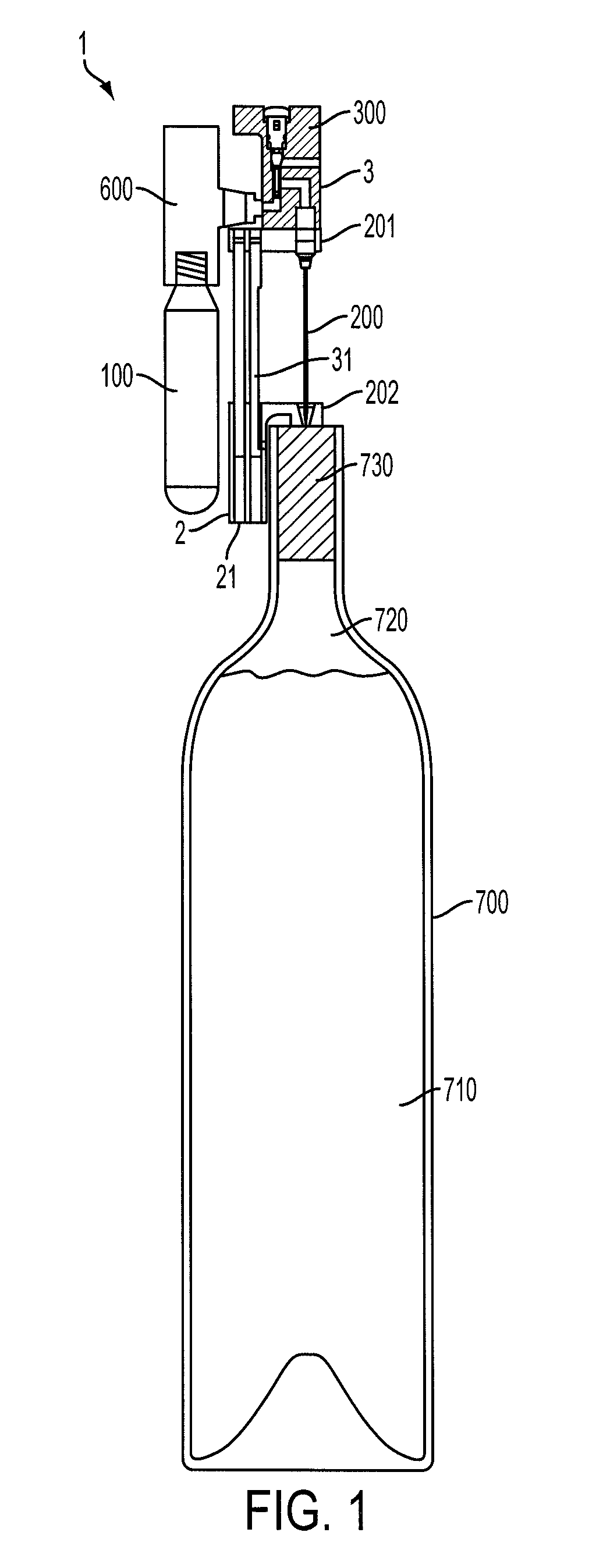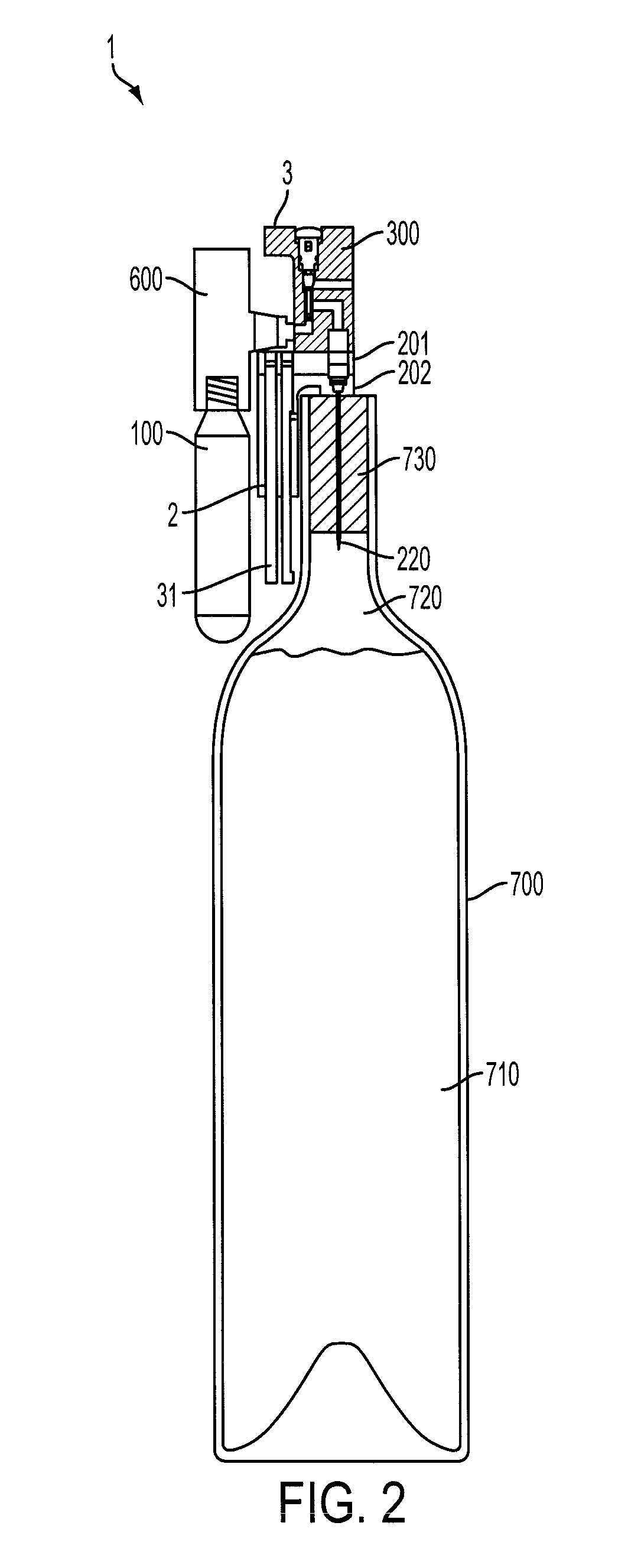Method and apparatus for beverage extraction needle guiding
a technology of beverage extraction and needle guiding, which is applied in the direction of liquid transfer devices, liquid handling, packaging goods types, etc., can solve the problems of air or other potentially damaging gasses or liquids entering the bottle, and achieve the effect of little or no effect on beverage quality
- Summary
- Abstract
- Description
- Claims
- Application Information
AI Technical Summary
Benefits of technology
Problems solved by technology
Method used
Image
Examples
Embodiment Construction
[0028]Aspects of the invention are described below with reference to illustrative embodiments, but it should be understood that aspects of the invention are not to be construed narrowly in view of the specific embodiments described. Thus, aspects of the invention are not limited to the embodiments described herein. It should also be understood that various aspects of the invention may be used alone and / or in any suitable combination with each other, and thus various embodiments should not be interpreted as requiring any particular combination or combinations of features. Instead, one or more features of the embodiments described may be combined with any other suitable features of other embodiments.
[0029]FIG. 1 shows one embodiment of a beverage extraction system 1 that incorporates one or more aspects of the invention. This illustrative system 1 includes a body 3 with an attached pressurized source of gas 100 (such as a compressed gas cylinder) that provides gas under pressure (e.g....
PUM
| Property | Measurement | Unit |
|---|---|---|
| pressure | aaaaa | aaaaa |
| needle length | aaaaa | aaaaa |
| length | aaaaa | aaaaa |
Abstract
Description
Claims
Application Information
 Login to View More
Login to View More - R&D
- Intellectual Property
- Life Sciences
- Materials
- Tech Scout
- Unparalleled Data Quality
- Higher Quality Content
- 60% Fewer Hallucinations
Browse by: Latest US Patents, China's latest patents, Technical Efficacy Thesaurus, Application Domain, Technology Topic, Popular Technical Reports.
© 2025 PatSnap. All rights reserved.Legal|Privacy policy|Modern Slavery Act Transparency Statement|Sitemap|About US| Contact US: help@patsnap.com



